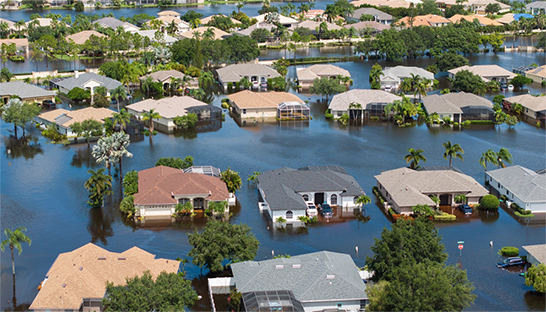The Imperative for Resilient AI Infrastructure
Globally, infrastructure systems face increasing pressure from extreme weather events, aging assets, and the demands of technological change[5]. Natural disasters are projected to cause over $450 billion in damage to infrastructure annually by 2050, a significant increase from the nearly $200 billion average annual loss over the past 15 years[5][16]. Climate change is expected to worsen the frequency and severity of these events, driving losses higher[5][16]. In this context, Artificial Intelligence (AI) is emerging as a critical tool for building climate-resilient infrastructure[9]. Through real-time data analysis, predictive modeling, and smart maintenance, AI is transforming how we anticipate and adapt to a changing climate[9]. Strategic investments in AI have the potential to reduce losses from storms and floods by as much as US$50 billion per year[1]. By 2050, AI-powered tools could save approximately $70 billion annually from direct damages, preventing about 15% of projected losses[5][16]. AI can be applied across the entire infrastructure lifecycle, from planning and design to disaster response and recovery, representing a shift from reactive measures to proactive resilience[1].
Architectural Trade-offs: Edge vs. Cloud Computing

Building resilient AI infrastructure involves a critical architectural decision between edge and cloud computing[11]. Edge computing is a distributed model that brings processing and storage closer to the data source, which minimizes latency and bandwidth use[12][14]. This approach is ideal for applications requiring real-time responses, such as autonomous vehicles and industrial automation, and it enhances reliability by allowing systems to function even with impaired cloud connectivity[12][14]. Processing locally also improves security and privacy, as sensitive data does not need to be transmitted to a central location[2][14]. In contrast, cloud computing delivers IT resources like servers, storage, and software over the internet from large, centralized data centers[14]. Its main advantages are massive scalability, global accessibility, and cost-effectiveness, as it eliminates the need for upfront investment in physical hardware[12][14]. The cloud is well-suited for processing large volumes of data that are not time-sensitive and for training large AI models[2][11]. However, edge and cloud computing are not mutually exclusive; they are often combined in hybrid ecosystems[12]. A common pattern for AI is to train large, complex models in the cloud and then deploy them to edge devices for real-time inference[2]. This approach leverages the immense computational power of the cloud and the low-latency responsiveness of the edge[11].
Ensuring Security with a Zero Trust Architecture
A Zero Trust architecture (ZTA) is a modern security strategy essential for protecting complex AI infrastructure[3]. It is not a single product but an approach based on the core principle to 'never trust, always verify'[3]. This model assumes that a breach is always possible and treats every access request as if it originated from an uncontrolled network, regardless of its location[3][10]. The U.S. government has endorsed this approach through Executive Order 14028 and the Office of Management and Budget's federal Zero Trust strategy[3]. The core tenets of ZTA, as defined by NIST, include securing all communication regardless of network location, granting access to resources on a per-session basis, and determining access through dynamic policies[15]. Implementation relies on several key principles, including continuous monitoring and validation, least-privilege access, device access control, microsegmentation to contain breaches, and multi-factor authentication (MFA)[6]. A ZTA is composed of logical components: a Policy Engine (PE) that decides on access, a Policy Administrator (PA) that establishes the communication path, and a Policy Enforcement Point (PEP) that enables, monitors, and terminates connections[15]. This framework is designed to prevent unauthorized access to data and services and to limit an attacker's ability to move laterally within a network[6][15].
Designing for Sustainability with Green IT
As digitalization accelerates, the energy consumption of IT systems, including powerful AI, continues to grow, contributing to a significant carbon footprint[7][13]. Green IT has emerged as a discipline focused on reducing the environmental impact of these digital systems[7]. Sustainable software development requires considering environmental impacts throughout the entire lifecycle[7]. Key practices include building with modular and lean designs to support reuse and avoid unnecessary features[7]. Choosing energy-aware programming languages, such as compiled languages like Rust or Go for compute-intensive workloads, can also reduce energy consumption during execution[7]. A critical strategy is to avoid overprovisioning resources by using autoscaling and shutting down idle components, which not only reduces environmental impact but also cuts costs[7][13]. Additionally, organizations should prefer green hosting options, such as cloud providers powered by renewable energy[7]. Data management is another key area; moving processing closer to the data reduces the energy costs of data transit, and archiving data to cheaper, less resource-intensive storage minimizes the footprint of production databases[13]. However, it is important to be mindful of the rebound effect, where efficiency gains are offset by increased usage; therefore, conscious decisions about system scale and feature scope are essential for true sustainability[7].
Architectural Patterns and Case Studies in Action
AI-enabled infrastructure resilience is being successfully implemented across the globe, demonstrating its value in planning, response, and recovery phases[1]. In the planning phase, digital twins are a powerful tool. Lisbon, Portugal, used a digital twin to simulate flood scenarios and design a sophisticated drainage plan, which could mitigate up to 20 floods and save over $100 million in damages over the next century[1]. Similarly, Florida has used digital twins to better understand sea-level rise and extreme weather[5]. For predictive maintenance, Barcelona is using big data and AI to analyze nine years of sensor data from a water treatment plant. This helps predict the state of filtering membranes to optimize cleaning schedules, thereby reducing costs and the plant's carbon footprint[9]. During a disaster, AI enables effective response through early warning systems. Google's Flood Forecasting Initiative provides flood alerts up to seven days in advance for 80 countries, protecting an estimated 460 million people[9]. For wildfire detection, real-time surveillance using IoT sensors and satellites can help suppress fires before they become uncontrollable, potentially avoiding hundreds of millions in losses annually[1]. In the recovery phase, AI accelerates damage assessment. For instance, Deloitte's OptoAI tool can analyze post-disaster imagery to prioritize repairs, reducing roof repair time by more than half and cutting material overages by 15%-30%[1].
Get more accurate answers with Super Pandi, upload files, personalized discovery feed, save searches and contribute to the PandiPedia.
Let's look at alternatives:
- Modify the query.
- Start a new thread.
- Remove sources (if manually added).


.jpg)
